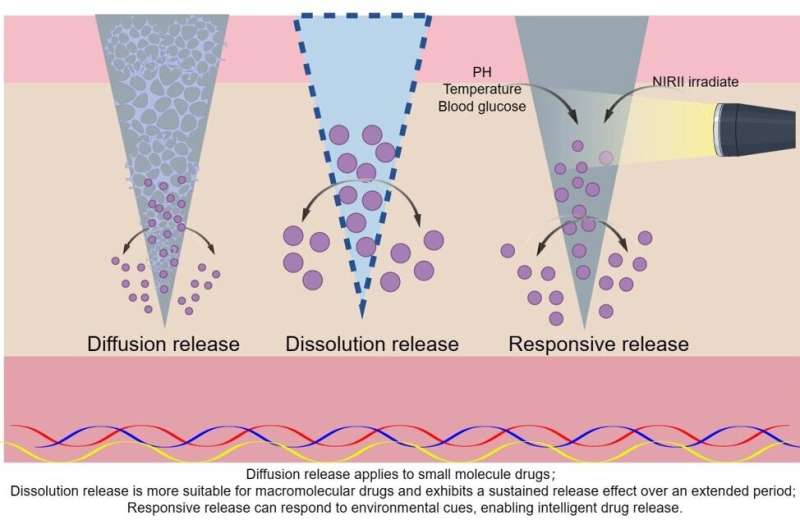This article has been reviewed according to Science X's editorial process and policies. Editors have highlighted the following attributes while ensuring the content's credibility:
fact-checked
proofread
Promoting diabetic wound healing using microneedles

The global population of patients with diabetic wounds is expected to rise to between 9.1 million and 26.1 million by 2030. Diabetic wounds severely impact patients' quality of life, both physically and mentally, while also imposing a substantial economic burden on health care systems.
Current treatment methods for diabetic wounds include surgical debridement, negative pressure wound therapy, vascularized flaps, and different types of local dressings. Among these dressings, commonly used options include gauze, metal ion dressings, hydrogel dressings, and platelet-rich plasma dressings. However, traditional dressings have limited drug loading capacity and permeability and are unable to deliver active medications to the deep wound bed.
In recent years, microneedles have become a research focus in wound management due to their advantages of high drug load/delivery capabilities, minimal invasiveness, convenience, and strong adhesion. These attributes significantly reduce patient discomfort and improve compliance.
Microneedles enhance the efficiency and permeability of transdermal drug delivery by penetrating the skin barrier and incorporating drugs, proteins, nanoparticles, and other therapeutic agents, effectively transporting them to the wound bed.
At present, there is a lack of summary articles on the application of microneedles of different structures and materials to diabetic wounds. This also hampers the development of microneedle dressings related to diabetic wounds.
To that end, in a review published in the Chinese Journal of Plastic and Reconstructive Surgery, a group of researchers from China summarizes the materials of microneedles, techniques, structure, design, release mechanism, classification of delivered substances and their effects on different stages of wound healing.
"The structural composition and material selection of microneedles influence their efficacy in treating diabetic wounds," explains the corresponding author of the study, Youbai Chen, a professor in plastic and reconstructive surgery at the First Medical Center of Chinese PLA General Hospital in Beijing.
"Microneedles can promote diabetic wound healing through several mechanisms, such as antibacterial, anti-inflammatory, antioxidant, hypoglycemic, and angiogenic activities at different stages of the healing process."
"In conclusion, microneedles are promising drug delivery systems for the treatment of diabetic wounds," adds first author Chun Liang. "We hope that our summary will be enlightening and instructive for further research on microneedle dressings."
More information: Chun Liang et al, Revolutionizing diabetic wound healing: The power of microneedles, Chinese Journal of Plastic and Reconstructive Surgery (2023). DOI: 10.1016/j.cjprs.2023.12.004




















